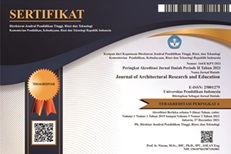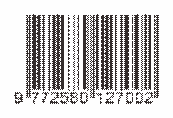ENHANCING COMMUNITY ENVIRONMENTAL AWARENESS THROUGH INDOOR AIR QUALITY WORKSHOP
Abstract
Abstract - This research is motivated by the poor air quality in the room at home that can cause Sick Building Syndrome (SBS). The purpose of this research is to increase public awareness of the environment through indoor air quality workshops, with a Pre-Experimental method and One Group Pre-Test Post-Test research design. The sample in this study was Pasteur RW6, Sukajadi District at Bandung City, which was selected based on criteria including non slum areas, as well as high community participation. The results showed that the level of public awareness, knowledge, attitudes, and actions on air quality in the room before the Workshop was in the medium category. Then it increased after the Workshop, which was on a relatively moderate increase in knowledge. This can be seen from the majority of people who already know the importance of indoor air quality, but the knowledge of specific components that affect indoor air quality is still not understood. Whereas attitudes and actions experienced a relatively small increase due to the knowledge gained in the Workshop not being implemented in the form of real attitudes and actions in daily life because people's habits are difficult to change.
Keywords – Environmental Awareness, Indoor Air Quality, Workshop, Community Awareness
Full Text:
PDFReferences
Aini Jasmin, G., Noorizan, M., Suhardi, M., Murad, A. G., & Ina, K. (2012). The use of plants to improve indoor air quality in small office space. Pertanika Journal of Social Science and Humanities, 20(2), 493–503.
Aminrad, Z., Sayed Zakaria, S. Z. B., & Hadi, A. S. (2011). Influence of age and level of education on environmental awareness and attitude: Case study on Iranian students in Malaysian Universities. Social Sciences, Vol. 6, pp. 15–19. https://doi.org/10.3923/sscience.2011.15.19
Awan, U., & Abbasi, A. S. (2013). Environmental Sustainability through Determinism the Level of Environmental Awareness, Knowledge and Behavior among Business Graduates. Research Journal of Environmental and Earth Sciences, 5(9), 505–515. https://doi.org/10.19026/rjees.5.5680
Brilli, F., Fares, S., Ghirardo, A., de Visser, P., Calatayud, V., Muñoz, A., … Menghini, F. (2018). Plants for Sustainable Improvement of Indoor Air Quality. Trends in Plant Science, 23(6), 507–512. https://doi.org/10.1016/j.tplants.2018.03.004
Citraswari, H., Husein, A., & Muryoto. (2015). Hubungan Perilaku Penyehatan Udara di dalam Ruang Rumah dan Gangguan Kesehatan Keluarga di Kelurahan Caturtunggal Wilayah Kerja Puskesmas Depok III, Sleman, Yogyakarya. Sanitasi, Jurnal Kesehatan Lingkungan, 6, 157–164.
Fitria, L. et al. (2008). Kualitas Udara Dalam Ruang Perpustakaan. 12(2), 76–82.
Ham, M., Horvat, M., & Mrčela, D. (2015). Insights for Measuring. 159–176.
Jungk, R., & Muller, N. (1987). Future Workshops : How to create desirable futures. London: Institute of Social Inventions.
Kelly, F. J., & Fussell, J. C. (2019). Improving indoor air quality , health and performance within environments where people live , travel , learn and work. Atmospheric Environment, 200(November 2018), 90–109. https://doi.org/10.1016/j.atmosenv.2018.11.058
Kencanasari, R. A. V., Surahman, U., & Permana, A. Y. (2019). The Instrumental Framework to Measuring Environmental Awareness. Innovation of Vocational Technology Education, 15(2), 101. https://doi.org/10.17509/invotec.v15i2.19638
Kencasari, R.A.V.,, Usep surahman, Asep Yudi Permana. (2019). Sick building syndrome: Assessment of school building air quality. Journal of Physics: Conference Series, 1375(1). https://doi.org/10.1088/1742-6596/1375/1/012087
Kencanasari, R. . V., Surahman, U., Permana, A. Y., & Nugraha, H. D. (2020). Kondisi Kualitas Udara Di Dalam Ruangan Pemukimanan Non-Kumuh Kota Bandung. Jurnal Arsitektur ZONASI, 3(3), 235–245. https://doi.org/10.17509/jaz.v3i3.28134
Kim, J. H., Lee, D., Lim, H., Kim, T., Suk, K., & Seo, J. (2018). Risk assessment to human health: Consumer exposure to ingredients in air fresheners. Regulatory Toxicology and Pharmacology, 98, 31–40. https://doi.org/10.1016/j.yrtph.2018.05.015
Lu, C., Deng, Q., Li, Y., Sundell, J., & Norbäck, D. (2016). Science of the Total Environment Outdoor air pollution , meteorological conditions and indoor factors in dwellings in relation to sick building syndrome ( SBS ) among adults in China. Science of the Total Environment, 560–561, 186–196. https://doi.org/10.1016/j.scitotenv.2016.04.033
Mat Said, A., Ahmadun, F. R., Paim, H. L., & Masud, J. (2003). Environmental Concerns, Knowledge and Practices Gap among Malaysian Teachers. International Journal of Sustainability in Higher Education, 4(4), 305–313. https://doi.org/10.1108/14676370310497534
Mei, N. S., Wai, C. W., & Ahamad, R. (2016). Environmental Awareness and Behaviour Index for Malaysia. Procedia - Social and Behavioral Sciences, 222(07), 668–675. https://doi.org/10.1016/j.sbspro.2016.05.223
Nugraha, H. D., Poniman, D., Kencanasari, R. A. V., Maosul, A., & Rusydi, M. I. (2020). Meta-Analisis Model Pembelajaran Vokasi dalam Kondisi Covid-19. Jurnal Dinamika Vokasional Teknik Mesin, 5(2), 83–94. https://doi.org/10.21831/dinamika.v5i2.34779
Permana, A. Y., Farah, A., Permana, S., & Andriyana, D. (2020). Konfigurasi Ruang Berdasarkan Kualitas Konektivitas Ruangan Dalam Perancangan Kantor : Space Syntax Analysis. Jurnal Arsitektur Zonasi, 3(2), 155–170.
Permana, A. Y., Wijaya, K., Nurrahman, H., & Permana, A. F. S. (2020). Pengembangan Desain Micro House Dalam Menunjang Program Net Zero Energy Buildings (NZE-Bs). Jurnal Arsitektur ARCADE, 4(1), 73. https://doi.org/10.31848/arcade.v4i1.424
Siswanti, & Wijayanti, Y. (2018). Faktor Risiko Lingkungan Kejadian Kusta. Higeia(Journal of Public Health Research and Development), 2(3), 352–362. https://doi.org/https://doi.org/10.15294/higeia.v2i3.23619
Takaoka, M., Suzuki, K., & Norbäck, D. (2016). Sick Building Syndrome among Junior High School Students in Japan in Relation to the Home and School Environment. Global Journal of Health Science, 8(2), 165–177. https://doi.org/10.5539/gjhs.v8n2p165
Takigawa, T., Wang, B., Sakano, N., Wang, D., Ogino, K., & Kishi, R. (2009). Science of the Total Environment A longitudinal study of environmental risk factors for subjective symptoms associated with sick building syndrome in new dwellings. Science of the Total Environment, The, 407(19), 5223–5228. https://doi.org/10.1016/j.scitotenv.2009.06.023
Trantallidi, M., Dimitroulopoulou, C., Wolkoff, P., Kephalopoulos, S., & Carrer, P. (2015). EPHECT III: Health risk assessment of exposure to household consumer products. Science of the Total Environment, 536, 903–913. https://doi.org/10.1016/j.scitotenv.2015.05.123
Utami, J. E., Rusmiati, Rokhmalia, F., & Suprijandani. (2017). Analisis Kandungan Jamur Candida Albicans Terhadap Sanitasi Toilet Umum di Pasar Kota Bojonegoro. Global Health Science, 2(2), 87–90. https://doi.org/10.1016/j.cbpa.2012.10.010
Utari, R. (2011). Taksonomi Bloom Apa dan Bagaimana Menggunakannya? In Widyaiswara Madya, Pusdiklat KNPK (pp. 1–13). https://doi.org/10.1111/j.1365-2427.1976.tb01616.x
Yao, M., & Zhao, B. (2017). Window opening behavior of occupants in residential buildings in Beijing. Building and Environment, 124(August), 441–449. https://doi.org/10.1016/j.buildenv.2017.08.035
DOI: https://doi.org/10.17509/jare.v2i2.30290
Refbacks
- There are currently no refbacks.
Copyright (c) 2020 R.A Vesitara Kencanasari, Usep Surahman, Asep Yudi Permana

This work is licensed under a Creative Commons Attribution-NonCommercial-ShareAlike 4.0 International License.

This work is licensed under a Creative Commons Attribution-ShareAlike 4.0 International License.








